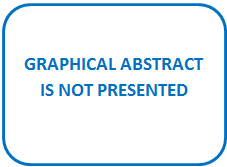Consideration of analytics of city brand modeling in the context of post-war development of Ukrainian territories
DOI:
https://doi.org/10.15587/2706-5448.2023.283496Keywords:
city brand, territory branding, stakeholder analysis, post-war reconstruction, city ranking, Smart CityAbstract
The object of the article is the formation of marketing priorities for the successful development of a domestic city. The subject of the article is analytical tools for modeling the city brand. The article analyzes the current problems of branding territories in the context of intensified competition for resources and factors of production in postwar Ukraine. The authors consider the city's brand to be a kind of unique resource that will play an important role in the competition of territories. That is why, in the process of post-war development of domestic cities, the strategic vision of which should be formed now, even before the end of the war, it is necessary to identify the elements of the urban environment that will form the basis of the city's brand. The need to develop a city's (territory's) brand, taking into account the new reality, actualizes the scientific search in this direction. The research methodology is based on the fundamental provisions of the theory of branding and spatial identification, as well as the theory of stakeholders and its working tool – stakeholder analysis. The peculiarities of identifying stakeholders in the city development, their systematization and assessment using the tools of stakeholder analysis are determined. The approaches to the formation, definition and organization of the needs of the territory, taking into account the strategic context, are substantiated. The formalization of stakeholder behavior practices through the use of theoretical game models is recommended. The results of the analysis of the possibilities of using international ratings for the development of territorial (primarily urban) branding strategies are presented. The main trends in urban innovation, which focus on the creation of «smart» cities in post-war Ukraine, are outlined. The results obtained outline a set of complementary analytical methods and tools, the practical use of which will make it possible to modernize the branding of domestic territories. The proposed approach to the formation of a city brand based on the introduction of stakeholder analysis with appropriate tools can play an important role as a basis for creating effective methods of territory brand management. As well as the formation of strategies for their development, taking into account the strengths and weaknesses and development potential for the growth of the welfare of the population of the territory and Ukraine as a whole.
References
- Anholt, S. (2009). Places: Identity, Image and Reputation. Palgrave Macmillan.
- Govers, R., Frank, M. G. (2009). Place Branding: Glocal, Virtual and Physical Identities, Constructed, Imagined and Experienced. London: Palgrave Macmillan, 324. doi: https://doi.org/10.1007/978-0-230-24702-4
- Avraham, E., Ketter, E. (2012). Media strategies for marketing places in crisis: Improving the image of cities, countries and tourist destinations. Routledge, Taylor and Francis, 248. doi: https://doi.org/10.4324/9780080557076
- Potter, E. H. (2009). Branding Canada. Projecting Canada`s soft power through public diplomacy. Montreal: McGill-Queen`s Univ. Press, 368.
- Dinnie, K. (2011). City Branding: Theory and Cases. Palgrave Macmillan.
- Kotler, P., Gertner, D. (2002). Country as brand, product, and beyond: A place marketing and brand management perspective. Journal of Brand Management, 9 (4), 249–261. doi: https://doi.org/10.1057/palgrave.bm.2540076
- Aaker, D. (2014). Aaker on Branding: 20 Principles That Drive Success. Morgan James Publishing, 208.
- Boisen, M., Terlouw, K., van Gorp, B. (2011). The selective nature of place branding and the layering of spatial identities. Journal of Place Management and Development, 4 (2), 135–147. doi: https://doi.org/10.1108/17538331111153151
- Sneed, C. T., Runyan, R., Swinney, J. L., Lim, H. (2011). Brand, business mix, sense‐of‐place: do they matter downtown? Journal of Place Management and Development, 4 (2), 121–134. doi: https://doi.org/10.1108/17538331111153142
- Kavaratzis, M., Hatch, M. J. (2013). The dynamics of place brands: An Identity-based Approach to Place Branding Theory. Marketing Theory, 13 (1), 69–86. doi: https://doi.org/10.1177/1470593112467268
- Van Helder, S. (2009). Kak uluchshyt uspeshnost razrabotky y realyzatsyy stratehyy brenda terrytoryy. Brend-menedzhment, 2 (45), 67.
- Freeman, R. E. (1984). Strategic Management: A Stakeholder Approach. Pitman: Boston.
- von Neumann, J., Morgenstern, O. (1944). Theory of Games and Economic Behavior. Princeton University Press, 625.
- Fundenberg, D., Tirole, J. (1991). Game Theory. Cambridge, London: The MIT Press.
- Shyian, A. A. (2009). Teoretyko-ihrovyi analiz ratsionalnoi povedinky liudyny ta pryiniattia rishen v upravlinni sotsialno-ekonomichnymy systemamy. Vinnytsia: UNIVERSUM-Vinnytsia, 404.
- Fedoriv, P. (2018). Zasterezhennia: chomu varto buty oberezhnymy z reitynhamy mist. Mistosit. Available at: https://mistosite.org.ua/en/articles/zasterezhennia-chomu-varto-buty-oberezhnymy-z-reitynhamy-mist
- Cities™ Index 2022–2023: Global 100 Top Innovative Cities. Available at: https://innovation-cities.com/innovation-cities-index-2022-2023-global-100-top-innovative-cities/26454/
- Smart-infrastruktura u stalomu rozvytku mist: svitovyi dosvid ta perspektyvy Ukrainy. Analitychna dopovid. Tsentr Razumkova (2021). Kyiv: Vydavnytstvo «Zapovit». Available at: https://razumkov.org.ua/uploads/other/2021-SMART-СYTI-SITE.pdf

Downloads
Published
How to Cite
Issue
Section
License
Copyright (c) 2023 Nina Yevdokymova, Dariya Kotenok

This work is licensed under a Creative Commons Attribution 4.0 International License.
The consolidation and conditions for the transfer of copyright (identification of authorship) is carried out in the License Agreement. In particular, the authors reserve the right to the authorship of their manuscript and transfer the first publication of this work to the journal under the terms of the Creative Commons CC BY license. At the same time, they have the right to conclude on their own additional agreements concerning the non-exclusive distribution of the work in the form in which it was published by this journal, but provided that the link to the first publication of the article in this journal is preserved.







